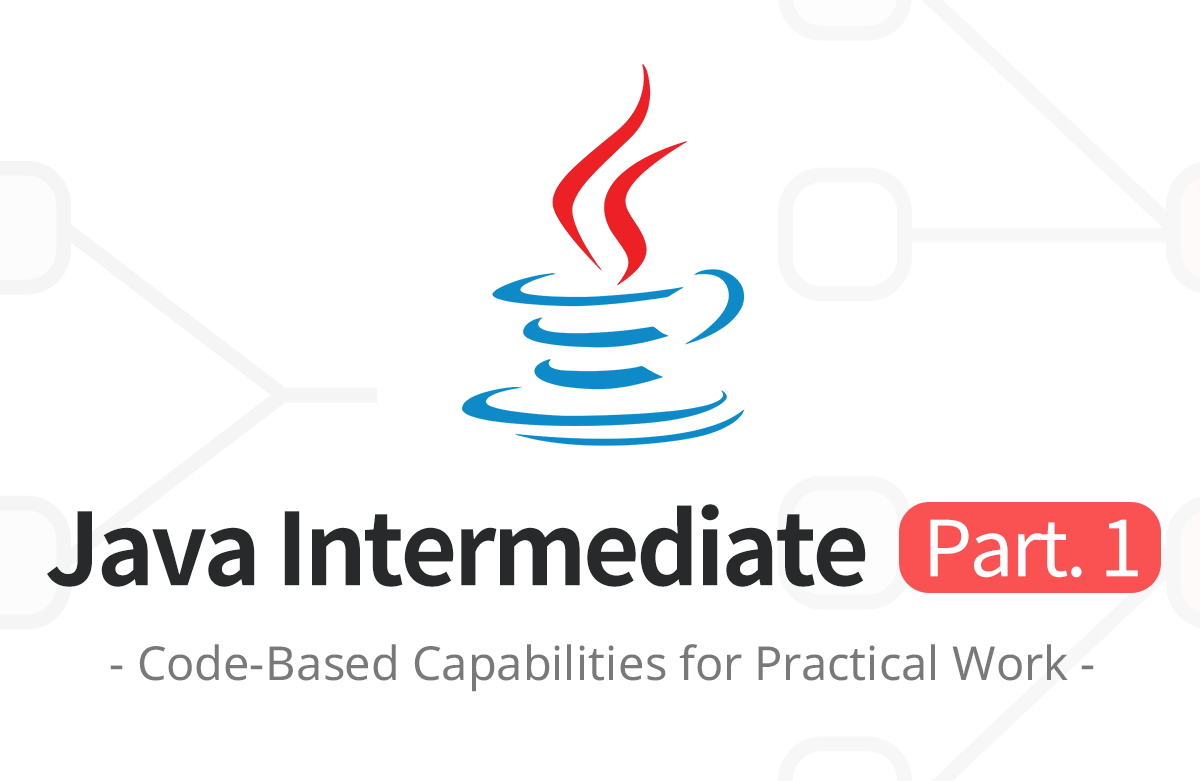Kim Young-han's Practical Java - Intermediate Level 1
This book provides an in-depth study of various intermediate-level Java features necessary for practical work, using example code.

Kim Younghan's Database Design Part 1 - Open Schedule Confirmed
Hello everyone
The Database Design Part 1 course is finally ready to open.
The Design Part 1 to be released this time is scheduled to launch between September 16th and September 19th.
Database Roadmap - Course Release Schedule
Design Part 1 – Complete Mastery of Modern Data Modeling - Expected release in mid-September
Design Part 2 - Mastering Practical Design Patterns and Application Techniques - Scheduled for release at the end of 2025
Performance Optimization and Advanced Features - Scheduled for release in early 2026
Title: Kim Young-han's Practical Database Design Part 1 – Complete Mastery of Modern Data Modeling
Number of lectures: 83
Lecture Duration: 16 hours 11 minutes
Lecture PDF materials: approximately 400 pages
Course Introduction
Databases are the foundation of all applications.
However, if not designed properly, projects quickly hit their limits, and maintenance becomes hell.
This course doesn't simply teach you how to create tables, but systematically shows you modern design methods that work in real-world practice. And I've packed this course with the results of my extensive hands-on experience and long deliberation.
Key Points of the Lecture
* Conceptual → Logical → Physical Modeling
Completely master DB design with a 3-step approach.
* Design know-how for immediate practical use
We don't just stay in theory, but use a shopping mall project as an example.
* Avoiding the Pitfalls of Poor Design
You'll realize through hands-on practice why ERD is important, why normalization is necessary, and when denormalization should be applied.
* The Essence of Key and Relationship Design
Natural Key vs Surrogate Key, One-to-One, One-to-Many, Many-to-Many relationships, and Identifying vs Non-Identifying relationships are covered in depth.
* Reflecting the Latest DB Design Trends
It presents modern data modeling methodologies without being stuck in textbooks from decades ago.
What You'll Learn
Requirements Analysis and Core Entity Derivation
ERD Creation and Terminology Dictionary Management
Normalization (1NF ~ BCNF) and Its Limitations
Index and Performance-Considered Physical Modeling
Shopping Mall Project Complete DB Design Practice
Target Audience
Developer: Someone who wants to design a proper database before writing code
Planner/Analyst: Those who want to fundamentally understand data flow and structure
Job seekers: Those who want to demonstrate differentiated DB design capabilities in interviews
Junior Developer: Those who want to learn design principles that can be applied immediately in practice
Senior Developer/Lead: Those who want to improve the quality of their team's database design
Complete Course Curriculum
1. Course Introduction and Class Materials
* 1-A. Windows - MySQL Installation Guide
* 1-B. macOS - Installation Guide
2. The Importance of Design
* First Steps in Database Design
* The disaster caused by poor design
* 3 Stages of Design - Conceptual, Logical, Physical
* Summary
3. Conceptual Modeling
* Requirements analysis and identification of key elements
* What is an entity?
* Entity Classification 1
* Entity Classification2
* Properties and Identifiers
* Cardinality and Participation
* Complete the ERD
* Related Entity - Resolving Many-to-Many Relationships
* Glossary
* Summary
4. Conceptual Modeling - Practice
* Practical Requirements Analysis
* Practical Conceptual Modeling - Getting Started
* Practical Conceptual Modeling - ERD Creation
* Practical Conceptual Modeling - Glossary Creation
* Summary
5. Logical Modeling 1 - Keys
* Various types of keys
* Natural Key vs Surrogate Key1 - Natural Key
* Natural Key vs Surrogate Key2 - Surrogate Key
* Natural Key vs Surrogate Key3 - Performance Trade-offs
* Natural Key vs Surrogate Key4 - Modern Design
* Composite key design
* Many-to-Many Relationships and Composite Keys
* Summary
6. Logical Modeling 2 - Participation and One-to-Many Relationships
* Logical Modeling - Relationships
* Participation
* One-to-Many (1:N) Many-to-One (N:1) Relationships - Foreign Key Position 1
* One-to-Many (1:N) Many-to-One (N:1) Relationships - Foreign Key Position 2
* One-to-Many (1:N) Many-to-One (N:1) Relationships - Joins and Data Multiplication
* Summary
7. Logical Modeling 3 - One-to-One, Many-to-Many Relationships
* One-to-one (1:1) relationship - Start
* One-to-one (1:1) relationship - Foreign key location
* One-to-One (1:1) Relationship - [Practice] Flexibility of Relationship Extension
* One-to-one (1:1) relationship - FK in the main table
* Many-to-Many (M:N) Relationship - Limitations of the Relational Model
* Many-to-Many (M:N) Relationship - Junction Table
* Many-to-Many (M:N) Relationship - Attributes
* Many-to-Many (M:N) Relationship - Conceptual and Logical Modeling
* Summary
8. Logical Modeling 4 - Identifying Relationships, Non-Identifying Relationships
* Identifying Relationship vs Non-Identifying Relationship - Concepts
* Identifying Relationship vs Non-Identifying Relationship - One-to-Many (1:N)
* Problems with Identifying Relationships
* Identifying Relationship vs Non-Identifying Relationship - SQL Queries, Performance
* Identifying Relationship vs Non-Identifying Relationship - One-to-One (1:1)
* Identifying Relationship vs Non-Identifying Relationship - Many-to-Many (M:N) 1
* Identifying Relationship vs Non-Identifying Relationship - Many-to-Many (M:N) 2
* Identifying Relationships vs Non-Identifying Relationships - Modern Design Trends
* Summary
9. Logical Modeling - Practice
* Practical Logical Modeling - Getting Started
* Practical Logical Modeling - ERD Creation
10. Normalization
* Normalization - Start
* First Normal Form
* Second Normal Form
* Third Normal Form
* BCNF Normal Form
* Practice and Normalization
* Summary
11. Physical Modeling
* Physical Modeling Overview
* Table and Column Conversion Rules 1 - Basic Rules
* Table and Column Conversion Rules 2 - Abbreviations and Singular/Plural
* Data Type 1 - Character, Number, PK Type
* Data Types 2 - Date and Time Types
* Denormalization
* Table Definition Document
* Summary
12. Physical Modeling - Practice
* Physical Modeling - Practice Start
* Index Design - Practice
* Denormalization - Practice
* Shopping Mall Table Definition Document
* Creating Shopping Mall DDL and Database
* Physical Model - Automatic ERD Generation
* Shopping mall feature check 1
* Shopping mall feature check 2
* Summary
Thank you.



